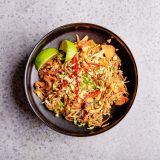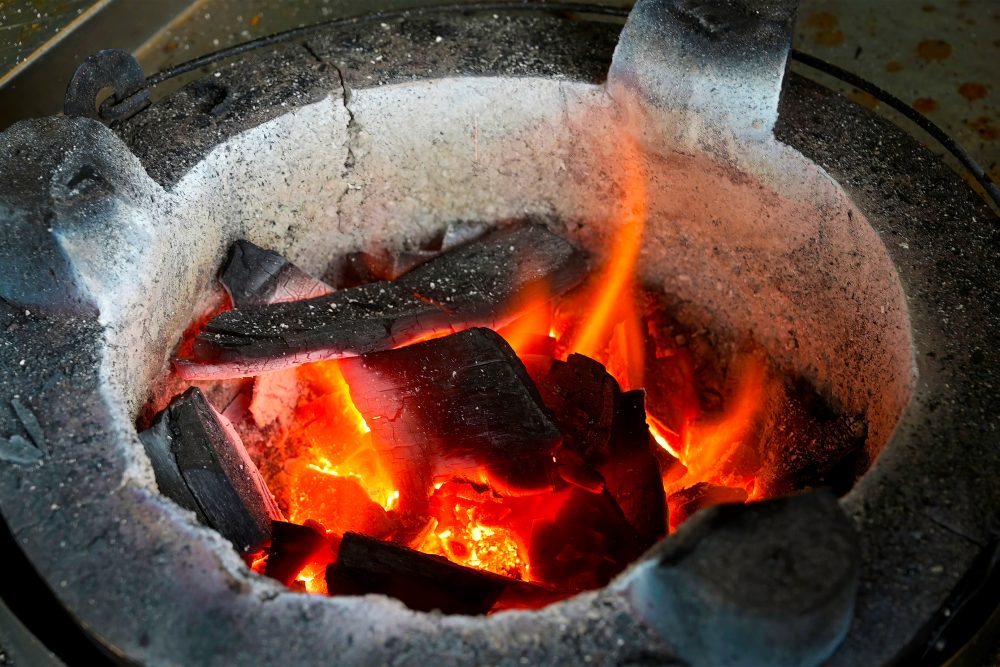On the streets of Penang, the metallic scrape of hundreds of woks in motion rattles through the air, forming a large part of the island’s soundtrack. The ruckus mingles with floating aromas of chili heat and sizzling meat, never-ending reminders that Malaysians go to other islands for the beach. They come to Penang to eat.
For breakfast, it can be Chinese-influenced noodle soups or roti flatbread with three curry dipping sauces. For hangovers, bah kut teh, pork simmered in an herbal spiced broth. After the bars close, it’s nasi kandar, a multicolored buffet’s worth of Indian-inspired curries served all on one plate. And in those woks? Often it’s a lunch of mee goreng, a noodle stir-fry so common it’s difficult to stand out.
But it was the charcoal-fueled flames that brought me to Abdul Hamid Bin Mohamad Husin’s stall, Cawangan Boundary. He bends down to feed the oven under his battered wok, and the fire again whooshes to life. Seconds later, the whirlwind begins.
He drops springy egg noodles into roiling water, slices boiled potatoes and fried tofu, ladles in sauces spicy and sweet, shreds cabbage and finishes his spectacular juggling act in minutes with a metallic clang and sweaty brow. It’s one of hundreds of orders of mee goreng he makes a day in the oppressive Malaysian heat, but he has to share the credit.
As his wife, Sarina Binti Hussin, tends to their grandchildren, she engages in a harmless bit of bragging. Though he does the stir-frying, she is the one who wakes at 5 a.m. to prepare the sauces.
“I’m the real star of this food stall,” she says with a sheepish grin.
In such a food-obsessed place, with dozens of other noodle stir-fries, mee goreng could easily be overlooked. After all, its name simply means “fried noodles.” But its combination of ingredients conveys a multicultural mashup found only in this former British colonial outpost.
Bouncy Chinese noodles are stir-fried with potatoes that came with Indian migrants. A sugary soy-based sauce caters to Malaysians’ sweet tooth, but also is made with chilies brought by the Portuguese. It comes topped with fried shallots imported from Indonesia, Chinese cabbage and local bean sprouts, lime wedges, peanuts and chunks of fried tofu. The local spicy condiment, sambal, is always served on the side.
It’s a hearty, satisfying dish. But what truly sets apart Cawangan Boundary’s is the sauce—and Binti and Hamid’s willingness to toy with the fine line between burnt and delightfully charred ingredients.
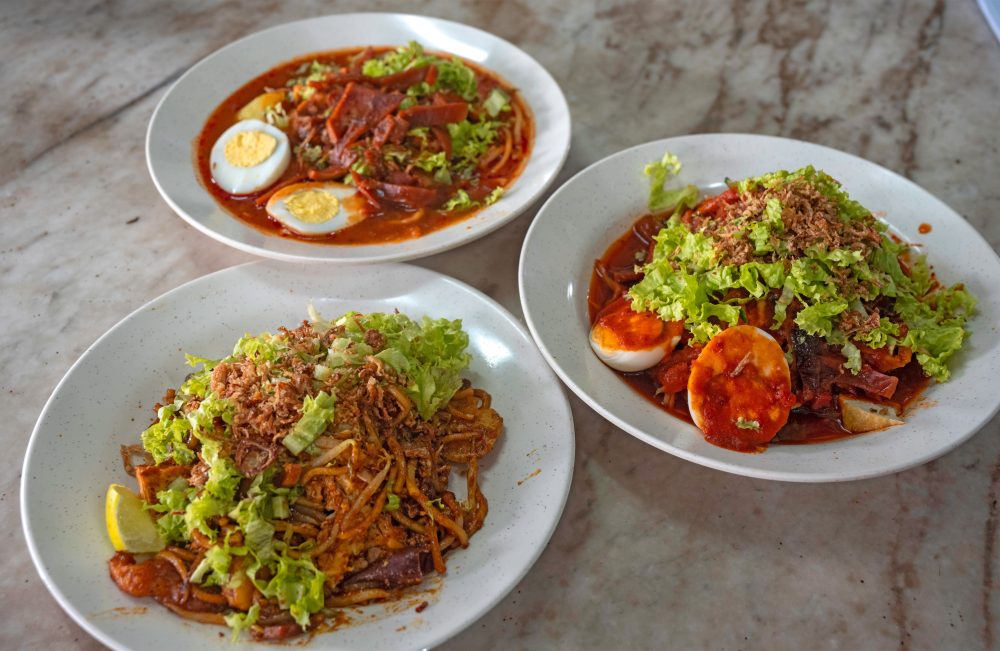
“You know this one tastes the best because the charcoal gives it that wok hei,” says Emmanuel Komargan, a Penang native who introduced me to the stall, referring to the elusive “breath of the wok” flavor. “There are rough spots with an inconsistent fire, so one half will be hotter to make the crispy parts.”
The inconsistency is something Hamid learned to harness when he took over for his father 34 years ago, and now Binti is the steward of secret sauce recipes that haven’t changed in more than 50. It boils down to this: Burn the aromatics, but not the sugar; char the noodles; caramelize the sauce.
Every other day, Binti makes batches of the two brothy sauces by the cauldron. Most stands have only one, but Hamid and Binti keep them separate, better to customize for individual tastes.
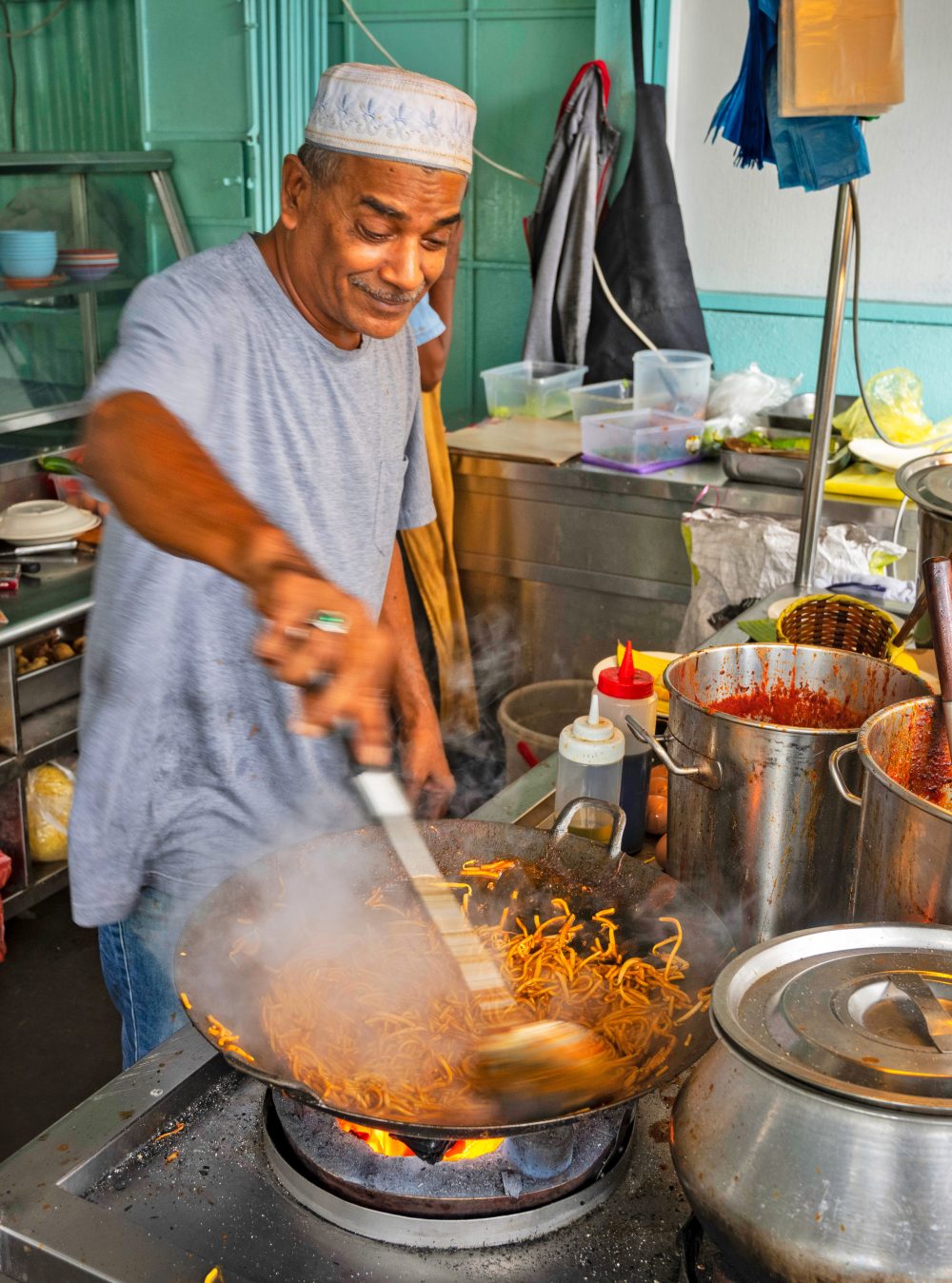
The sweet one begins by deeply charring sweet onions, providing a bitter, smoky backdrop to balance a significant amount of sweetness. Then she adds a puree of boiled peanuts, sweet potato and lentils, lets the mixture cook until it releases its liquid, then adds water spiked with tart tamarind. The broth simmers for hours to meld the flavors. Only at the end does she add the sugar, which dissolves in the residual heat. Any earlier and it would settle to the bottom and burn, turning the entire dish acrid.
By itself, the brothy sauce is complex, with an earthy richness from the lentils, pronounced peanut flavor and rich smokiness from the charred onion. The tamarind fades into the background, a tart equalizer. Subtly sweet and somehow light, the sauce is like a Southeast Asian consommé.
Binti’s fiery chili sauce is relatively basic, but built from four varieties of chili—dried Cebus, fresh bird’s eyes, chili powder and a paste made from yet another four chilies. I go to taste it and get a warning. “Are you sure?” she says. “Just watch out, it’s pure chili, chili and chili and chili.”
I’m undeterred. Smelling it tickles my nose even though the chili seeds have been removed. But besides heat, the sauce is bright and fruity.
For his part, Hamid starts cooking fresh egg noodles in boiling water just long enough to heat through. Then he adds a handful of bean sprouts to a wok with a splash of vegetable oil and ladles in a half cup each of sweet and spicy sauces. They bubble as their sugars caramelize in the intense heat.
Chunks of fried tofu and potato go in with the noodles, plus a squirt of soy sauce and a bit more oil. It’s done in under four minutes, with some pleasant char. The noodles are smoky, peanutty and rich. Cooling shredded cabbage and crispy fried shallots add crunch, while a squeeze of lime brightens. It’s like sesame noodles on steroids, the sauce so deeply complex without any particular ingredient taking the focus.
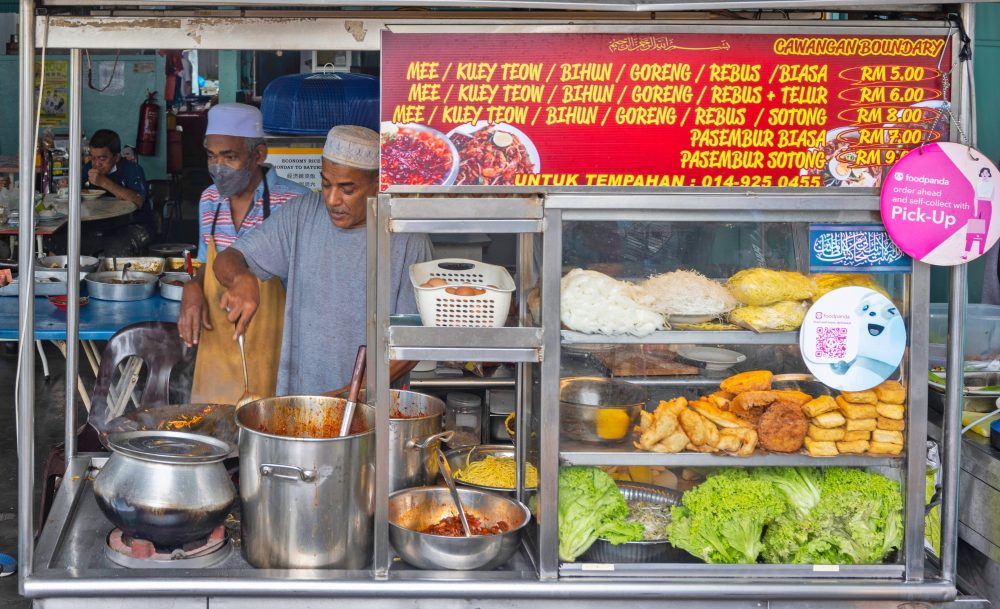
“And that’s why I’m the star,” Binti says.
Unfortunately, when we tried to scale down the proportions of her sauces for home cooks, the starchy lentils, sweet potato and peanuts made the sauce too thick, even in minuscule amounts. So we opted to make a streamlined version that leaned into deeply browned shallots to mimic the balancing bitterness in Binti’s sweet sauce, and we substituted store-bought sambal oelek for the chili sauce. Brown sugar and soy sauce made it slightly sweet and rich with umami.
We also pulled out some elements of the sauce to instead use as toppings. Rather than call for two types of potato, we included just sweet potato, which released starch that lent body to the sauce as we stir-fried the noodles (we call for dried lo mein; see sidebar).
Garnishing with toasted peanuts contributed textural contrast plus reinforced the smokiness of Binti’s charred onions. Sliced Fresno chilies provided the requisite heat, and a squeeze of lime enlivened the noodles with floral brightness.
Heat, sweet and char. The perfect noodle stir-fry.
